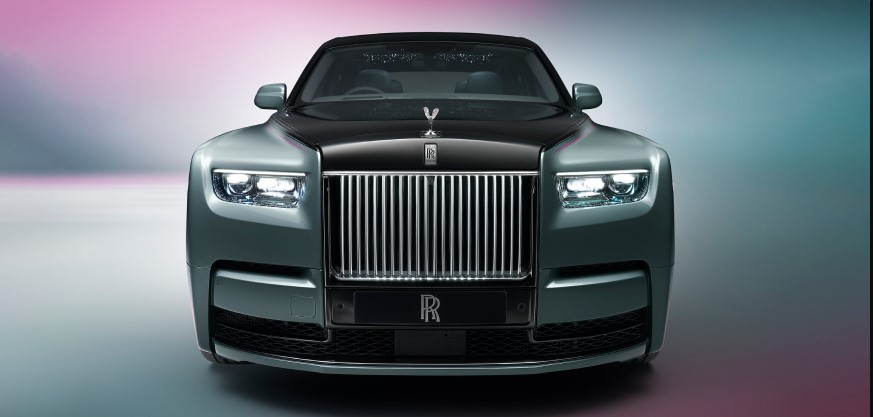The Rolls-Royce Phantom stands as a paragon of automotive luxury, blending timeless design with cutting-edge technology. This article explores the Phantom’s rich heritage, evolution, and intricate details, covering its launch, specifications, design, safety features, engine performance, technology, efficiency, pricing, and more.
Rolls-Royce Phantom: Launch Details
The Rolls-Royce Phantom VIII, the latest iteration of this iconic vehicle, was launched on June 11, 2017[3]. This model represents a significant step forward, building on the legacy of its predecessors while incorporating modern engineering and design principles[3]. The Phantom VIII utilizes an aluminum spaceframe chassis, a version of Rolls-Royce’s modular “Architecture of Luxury” platform[3]. This platform is also used by the Cullinan SUV and will underpin future Rolls-Royce models, ensuring a consistent level of luxury and performance across the brand’s lineup[3].
Rolls-Royce Phantom: Specifications
The Rolls-Royce Phantom is a 5-seater car with a 12-cylinder engine, offering both space and power[1]. It measures 5982 mm in length, 2018 mm in width, and has a wheelbase of 3772 mm[1]. These dimensions contribute to its commanding presence and spacious interior[1].
**Key Specifications of Rolls-Royce Phantom:**
* **Engine Displacement:** 6749 cc[1]
* **Max Power:** 563bhp@5000rpm[1]
* **Max Torque:** 900Nm@1700rpm[1]
* **Seating Capacity:** 5[1]
* **Transmission Type:** Automatic[1]
* **Boot Space:** 460 Litres[1]
* **Fuel Tank Capacity:** 100 Litres[1]
Rolls-Royce Phantom: Design
The Rolls-Royce Phantom VIII’s design is often described as an evolution of the Phantom VII, retaining many of its predecessor’s design features[3]. The vehicle’s styling maintains a classic yet contemporary aesthetic, characterized by its long hood, imposing grille, and elegant lines[3][7]. Two-tone paint options accentuate its muscular lines, drawing attention to its carefully sculpted form[7].
**Interior Design:** The interior of the Phantom is fully bespoke, allowing clients to personalize every detail to their preferences[3]. “The Gallery,” a display section in the front seat veneer, allows for the integration of different materials and artwork, offering limitless customization options[3]. The new generation Phantom also features the BMW iDrive V8.5 infotainment system with a 3D camera view, enhancing the driving experience with modern technology[3].
Rolls-Royce Phantom: Safety and Features
The Rolls-Royce Phantom includes a comprehensive suite of safety features:
* **Anti-lock Braking System (ABS):** Ensures controlled braking in emergency situations[1].
* **Driver and Passenger Airbags:** Provide crucial protection in the event of a collision[1].
* **Automatic Climate Control:** Maintains a comfortable cabin environment[1].
* **Power Steering:** Offers ease of handling and maneuverability[1].
* **Power Windows:** Adds convenience for both driver and passengers[1].
* **Active anti-roll bars:** enhance stability during cornering[3].
Yamaha MT-15 is giving amazing mileage and great features
Rolls-Royce Phantom: Engine and Performance
The Rolls-Royce Phantom is exclusively powered by a twin-turbocharged 6.75-litre V12 engine, a variant of BMW’s N74 engine known as the N74B68, specifically designed for the Phantom[3]. This engine delivers exceptional power and smoothness, befitting the vehicle’s luxury status[3].
**Performance Data:**
* **Displacement:** 6.75 L (412 cu in)[3]
* **Power:** 563 hp (420 kW) at 5,000 rpm[3]
* **Torque:** 900 N⋅m (664 lb⋅ft) at 1,700 rpm[3]
* **Top Speed:** 250 km/h (155 mph)[3]
* **0–100 km/h (0-62 mph):** 5.3 seconds (5.4 seconds for the Extended Wheelbase)[3]
The Phantom is equipped with ZF’s 8HP 8-speed automatic transmission, which is linked to a GPS receiver to optimize shift timing based on the car’s location and speed[3]. This ensures seamless and efficient power delivery in all driving conditions[3].
Rolls-Royce Phantom: Technology and Features
The Rolls-Royce Phantom integrates several advanced technological features to enhance comfort, convenience, and performance:
* **Self-Levelling Air Suspension:** Maintains a consistent ride height and smooth ride quality.
* **Electronically Controlled Dampers:** Adjust damping forces in real-time to optimize ride comfort and handling.
Four-Wheel Steering:** Improves maneuverability at low speeds and stability at high speeds. The system turns the rear wheels counter to the front wheels through a maximum of 3° at speeds lower than 60 km/h (37 mph) to improve maneuverability. At speeds above 80 km/h the rear wheels turn in the same direction as the front wheels through a maximum of 1° to increase high-speed stability.
* **”Flagbearer” System:** Uses a stereo camera to scan the road ahead and pre-configure the suspension for optimal ride quality[3]. The system operates at speeds of up to 100 km/h (62 mph).

